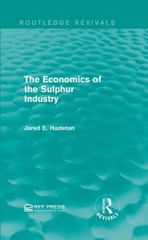Answered step by step
Verified Expert Solution
Question
1 Approved Answer
With probability p (0, 1), an unemployed agent draws a wage offer w from the set W = {wL, wH} , where wH > wL
With probability p (0, 1), an unemployed agent draws a wage offer w from the set W = {wL, wH} , where wH > wL > 0. The wage offer can be wH or wL with equal probability. The agent becomes employed if the wage offer is accepted. With probability 1 p, the agent does not get an offer and remains unemployed. The agent's utility is u(c), where c denotes the consumption level. Assume that u is continuously differentiable, strictly increasing, and strictly concave. Furthermore, suppose that there is a disutility from working v > 0, which is constant across all jobs. In essence, employed agent's utility is u(c) v. The government designs an unemployment policy that maximizes the agent's expected utility. If the agent accepts a job, then the wage is taxed by (w), so an employed agent consumes w (w). Notice that the tax can vary with wage. If the agent remains unemployed (either because the offer was rejected or the agent did not receive an offer), then the agent consumes unemployment benefit b 0. The policy has to satisfy the following budget constraint: p (wL) 2 + (wH) 2
Step by Step Solution
There are 3 Steps involved in it
Step: 1

Get Instant Access to Expert-Tailored Solutions
See step-by-step solutions with expert insights and AI powered tools for academic success
Step: 2

Step: 3

Ace Your Homework with AI
Get the answers you need in no time with our AI-driven, step-by-step assistance
Get Started


